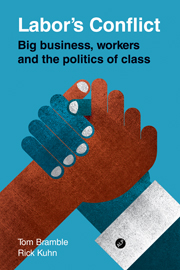Book contents
- Frontmatter
- Contents
- Preface
- Introduction
- 1 Labor's love's lost?
- 2 In the beginning: Labor's first quarter century
- 3 Between the Wars
- 4 Hot war, cold war, split
- 5 Labor after 70 years
- 6 The Whitlam era
- 7 Economic rationalism under Hawke and Keating
- 8 Labor in the wilderness
- 9 The Rudd–Gillard government
- 10 The Labor Party today: what's left
- Notes
- Index
9 - The Rudd–Gillard government
Published online by Cambridge University Press: 10 January 2011
- Frontmatter
- Contents
- Preface
- Introduction
- 1 Labor's love's lost?
- 2 In the beginning: Labor's first quarter century
- 3 Between the Wars
- 4 Hot war, cold war, split
- 5 Labor after 70 years
- 6 The Whitlam era
- 7 Economic rationalism under Hawke and Keating
- 8 Labor in the wilderness
- 9 The Rudd–Gillard government
- 10 The Labor Party today: what's left
- Notes
- Index
Summary
The new Labor government, elected on Rudd's promise of ‘an alternative, not an echo’, for the most part improvised on themes played by the Howard government over the preceding 13 years. There were some exceptions, but continuity in policy was far more evident than any clean break. Continuity, not just with the Howard government but with the Hawke and Keating governments before that. Adherence to orthodox economics, privatisation and the use of market mechanisms backed by coercive centralised control in the delivery of public services, employer friendly industrial relations reform, firm support for the US alliance, racism towards Aborigines and asylum seekers, and lack of action on climate change all characterised the Labor government of 2007–10. The interests of capitalists prevailed over those of Labor's working class supporters.
From neoliberalism to Keynesianism and back again
The exact content of Labor's economic agenda shifted dramatically during the 2008–9 global financial crisis, the defining event of the period – from neoliberalism to massive government intervention – but in both cases Labor's policy was entirely in accord with the dominant trend endorsed and promoted by the OECD. At the outset, Labor was determined to establish itself as a fiscally conservative government.
- Type
- Chapter
- Information
- Labor's ConflictBig Business, Workers and the Politics of Class, pp. 143 - 167Publisher: Cambridge University PressPrint publication year: 2010



